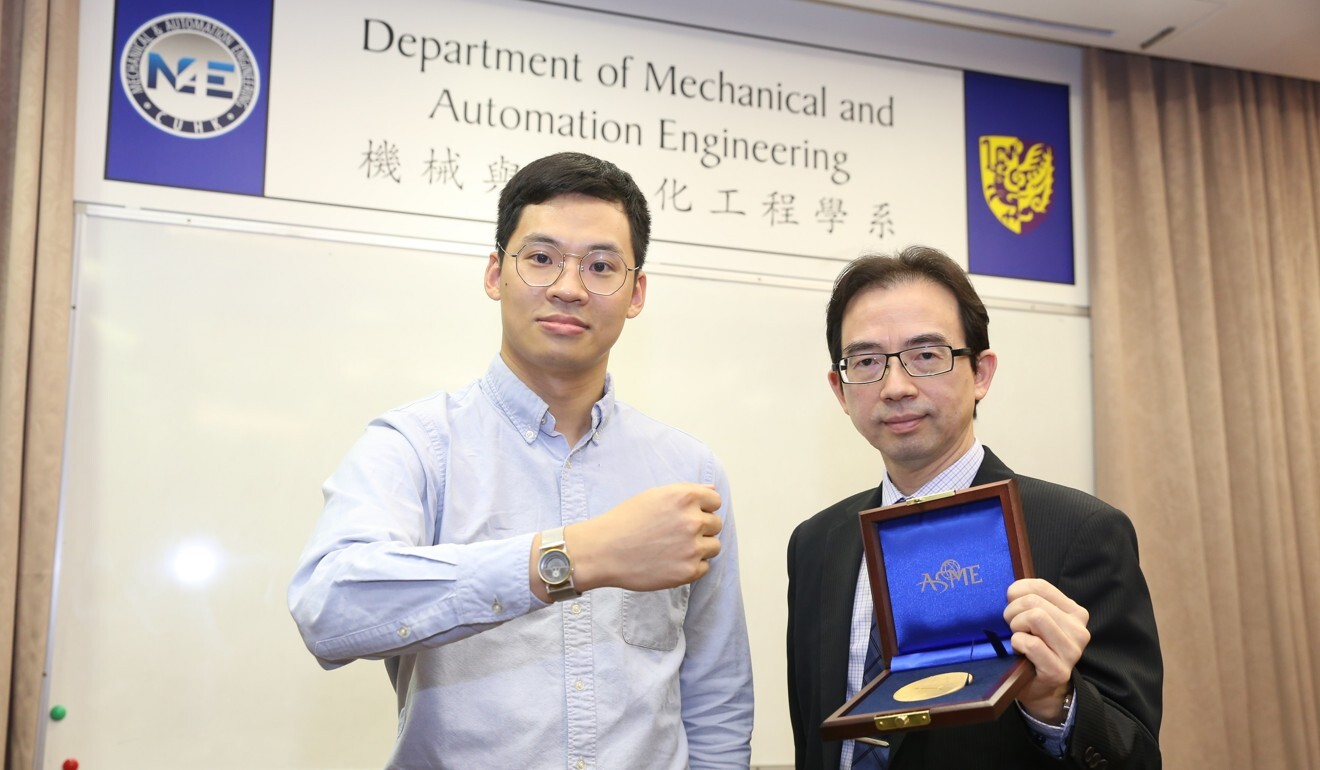
Smartwatches powered by wearers: CUHK researchers aim to harvest energy from human movements
- CUHK researchers create compact generator small enough to be embedded in smartwatches, which can harvest energy from movement
- Users can power their own devices just by moving around, eliminating the need to ever remove smartwatches to charge them

In a laboratory in the Chinese University of Hong Kong (CUHK), researchers study a swinging metal pole designed to mimic the movement of human arms.
Using a highly compact generator containing fewer than 10 components – including a motion capture unit and power generation unit – the researchers aim to harvest the energy created by human motion to power smartwatches and wristbands.
This research, documented in academic journals including Applied Energy and IEEE Internet of Things Journal earlier this year, comes amid a boom in the popularity of wearable technologies. Wearable shipments jumped nearly 90 per cent year-on-year in 2019, according to market research firm IDC. The global smartwatch market was worth US$20.64 billion in 2019 and is projected to reach $96.31 billion by 2027, according to another report by research firm Allied Market Research.
Smartwatches from the Apple Watch to Fitbit have become an especially common accessory among health enthusiasts in recent years. By tracking metrics including the quality of your sleep, your heart rate and even your blood oxygen levels, these gadgets can help you piece together an image of your overall health and make improvements to it.
There is one problem – due to limited battery life, this image will always have gaps representing the stretches of time when you are charging your device.
“Some data such as heart rate tracking should be 24-hours non-stop, but when you charge the smartwatch, you need to take it off,” said CUHK researcher Cai Mingjing. “[My smartwatch] needs to be charged once a week, which means a gap of several hours,” the 30-year-old PhD holder said.
Such gaps could make a crucial difference, especially for people that might have heart disease. “It is possible that a smartwatch [that could track patients’ heart rates continuously] could save their lives,” said Professor Wei-Hsin Liao, the chairman of CUHK’s Department of Mechanical and Automation Engineering (MAE).
Liao and Cao are members of a CUHK research team working on the compact generator, which they envision being embedded into smartwatches so that users can power their own devices just by moving around, eliminating the need to ever remove their smartwatches to charge them.
If this sounds like a digital version of an automatic watch to you, you are not wrong. Liao told the Post in an interview last week that mechanical watches did partially inspire the concept of a chargerless smartwatch.
“Mechanical watches have a long history and are able to work without a charger,” Liao said. Automatic watches, a type of mechanical watch, contain rotors within the watch that spin every time the wearer moves their wrist. This spinning motion generates energy that winds the watch, creating power for its movement.
However, “the low frequency of human motion results in relatively low energy conversion efficiency,” said Cai, who started working on the CUHK project three years ago. Furthermore, Liao said, compared to a mechanical watch which has the simple function of telling the time, smartwatches today have many functions and therefore require more electrical energy to run.
To solve this problem, the researchers included a magnetic component that could amplify the frequency of the wearer’s motion, according to Cai. “The energy produced by the new generator is 10 times that of similar products on the market and results from prior studies.”
The actual electrical power generated depends on the wearer’s activities: for example, a gym workout session will generate more power than typing on the keyboard, according to researchers.
The embedded generator is also relatively affordable – costs can be kept below HK$100 (US$13), Liao said, adding that the researchers were already in touch with companies to make the generator available commercially.

To be sure, there are already some self-charging smartwatches available on the market. A company called Sequent has created a self-charging smartwatch based on a traditional Swiss automatic watch movement, while Matrix, a popular smartwatch brand, claims its PowerWatch is the first in the world powered by the body heat of its wearer.
“At the beginning, we were very stressed. After all, [our competitors] are professional companies,” Cai said. “In terms of funding, we have disadvantages.”
“Commercial companies have invested a lot in it,” Liao said. “And you need to do better than them; it’s not easy.”
But Cai said that the team has good ideas on how to improve the performance of devices using their generator.
Liao, who joined CUHK in 1997, has been working on harvesting energy from human movement for years. Last year, he led a team to develop a lightweight “prototype harvester” that could generate electricity using the motion of the human knee joint when a person walks.
The lightweight device, which will cost around HK$700, can be attached to a person’s thigh and shank to transform biomechanical energy into electrical energy.
Liao said that besides convenience, another benefit of the embedded generator is that it could help reduce pollution. “The life of a battery is limited; after a certain period, people need to dispose of the waste battery. It’s not environmentally-friendly,” he said.
And in the future, he envisions such technology being expanded beyond smartwatches to other devices such as smartphones.
“There is a lot of energy generated when human beings move, so if we don’t use it, it will be a waste,” he said. However, he added: “Smartphones will need much more power [than smartwatches], if we could reduce its power consumption in the future, we will be [one step] closer to push a similar application to smartphones.”